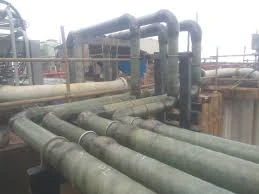
-
 Afrikaans
Afrikaans -
 Albanian
Albanian -
 Amharic
Amharic -
 Arabic
Arabic -
 Armenian
Armenian -
 Azerbaijani
Azerbaijani -
 Basque
Basque -
 Belarusian
Belarusian -
 Bengali
Bengali -
 Bosnian
Bosnian -
 Bulgarian
Bulgarian -
 Catalan
Catalan -
 Cebuano
Cebuano -
 China
China -
 China (Taiwan)
China (Taiwan) -
 Corsican
Corsican -
 Croatian
Croatian -
 Czech
Czech -
 Danish
Danish -
 Dutch
Dutch -
 English
English -
 Esperanto
Esperanto -
 Estonian
Estonian -
 Finnish
Finnish -
 French
French -
 Frisian
Frisian -
 Galician
Galician -
 Georgian
Georgian -
 German
German -
 Greek
Greek -
 Gujarati
Gujarati -
 Haitian Creole
Haitian Creole -
 hausa
hausa -
 hawaiian
hawaiian -
 Hebrew
Hebrew -
 Hindi
Hindi -
 Miao
Miao -
 Hungarian
Hungarian -
 Icelandic
Icelandic -
 igbo
igbo -
 Indonesian
Indonesian -
 irish
irish -
 Italian
Italian -
 Japanese
Japanese -
 Javanese
Javanese -
 Kannada
Kannada -
 kazakh
kazakh -
 Khmer
Khmer -
 Rwandese
Rwandese -
 Korean
Korean -
 Kurdish
Kurdish -
 Kyrgyz
Kyrgyz -
 Lao
Lao -
 Latin
Latin -
 Latvian
Latvian -
 Lithuanian
Lithuanian -
 Luxembourgish
Luxembourgish -
 Macedonian
Macedonian -
 Malgashi
Malgashi -
 Malay
Malay -
 Malayalam
Malayalam -
 Maltese
Maltese -
 Maori
Maori -
 Marathi
Marathi -
 Mongolian
Mongolian -
 Myanmar
Myanmar -
 Nepali
Nepali -
 Norwegian
Norwegian -
 Norwegian
Norwegian -
 Occitan
Occitan -
 Pashto
Pashto -
 Persian
Persian -
 Polish
Polish -
 Portuguese
Portuguese -
 Punjabi
Punjabi -
 Romanian
Romanian -
 Russian
Russian -
 Samoan
Samoan -
 Scottish Gaelic
Scottish Gaelic -
 Serbian
Serbian -
 Sesotho
Sesotho -
 Shona
Shona -
 Sindhi
Sindhi -
 Sinhala
Sinhala -
 Slovak
Slovak -
 Slovenian
Slovenian -
 Somali
Somali -
 Spanish
Spanish -
 Sundanese
Sundanese -
 Swahili
Swahili -
 Swedish
Swedish -
 Tagalog
Tagalog -
 Tajik
Tajik -
 Tamil
Tamil -
 Tatar
Tatar -
 Telugu
Telugu -
 Thai
Thai -
 Turkish
Turkish -
 Turkmen
Turkmen -
 Ukrainian
Ukrainian -
 Urdu
Urdu -
 Uighur
Uighur -
 Uzbek
Uzbek -
 Vietnamese
Vietnamese -
 Welsh
Welsh -
 Bantu
Bantu -
 Yiddish
Yiddish -
 Yoruba
Yoruba -
 Zulu
Zulu
grp pipes and fittings for ship building
GRP Pipes and Fittings for Shipbuilding A Comprehensive Overview
In the world of shipbuilding, the materials used for constructing vessels significantly impact the ship's performance, durability, and maintenance needs. One of the most innovative materials gaining traction in recent years is Glass Reinforced Plastic (GRP). GRP pipes and fittings are becoming increasingly popular due to their unique combination of lightweight properties, corrosion resistance, and superior strength, making them ideal for various maritime applications.
Advantages of GRP Pipes and Fittings
GRP pipes and fittings offer several advantages over traditional materials such as steel and plastic. One of the primary benefits is their excellent resistance to corrosive environments, which is particularly crucial in marine settings where exposure to saltwater and various chemicals is a given. Unlike metal pipes, GRP does not rust or corrode, ensuring a longer life span and reducing maintenance costs over time.
Additionally, GRP is significantly lighter than metal alternatives. This characteristic is particularly beneficial in the shipbuilding industry, where weight reduction can lead to improved fuel efficiency and increased payload capacity. The reduced weight of GRP components can contribute to a ship's overall performance, allowing for faster speeds and better maneuverability.
Moreover, GRP pipes can be easily molded into complex shapes, providing greater design flexibility. This versatility allows shipbuilders to create customized solutions that meet the specific needs of their projects. The ability to produce fittings in various sizes and configurations reduces the number of joints required, further minimizing the risk of leaks and enhancing the overall integrity of the piping system.
Applications in Shipbuilding
grp pipes and fittings for ship building

In the shipbuilding sector, GRP pipes and fittings are utilized in a wide range of applications. They are often employed in cooling systems, sewage systems, and ballasting systems due to their resistance to biofouling and a wide array of temperatures. Because of their lightweight nature, GRP products are frequently used in the construction of bulkheads, valves, and other integral ship components where conventional materials might not be as effective or practical.
Furthermore, GRP is an excellent insulator, making it suitable for use in areas where thermal insulation is crucial. Ship HVAC systems and plumbing can benefit significantly from the insulating properties of GRP, contributing to energy efficiency and improved climate control within the vessel.
Environmental Considerations
The environmental impact of shipbuilding materials has become an increasingly important consideration in recent years. GRP materials can be manufactured with lower energy consumption compared to traditional steel production. Additionally, the longevity and low maintenance requirements of GRP systems contribute to reduced waste over the lifecycle of a ship. For shipbuilders aiming to enhance their sustainability practices, switching to GRP pipes and fittings can be a strategic move.
Conclusion
In conclusion, GRP pipes and fittings are emerging as a game-changer in the shipbuilding industry. Their lightweight nature, resistance to corrosion, and versatility make them an attractive alternative to traditional materials. As the industry continues to prioritize efficiency and sustainability, GRP products are likely to play an increasingly prominent role in the construction and maintenance of modern vessels. The future of shipbuilding may very well lie in the innovative use of materials like GRP, paving the way for more resilient and environmentally friendly maritime solutions.









